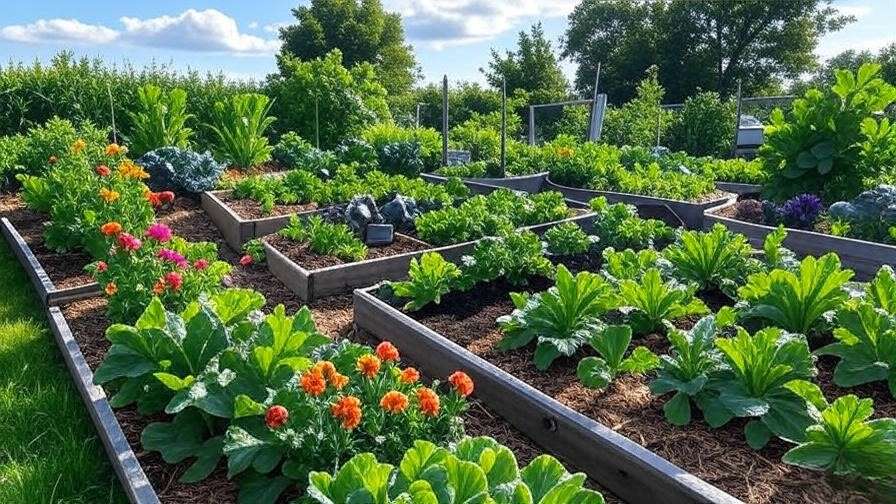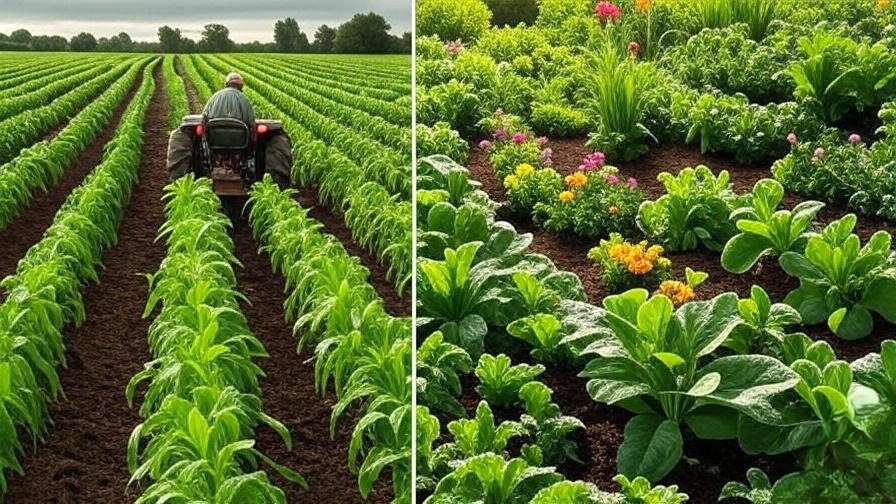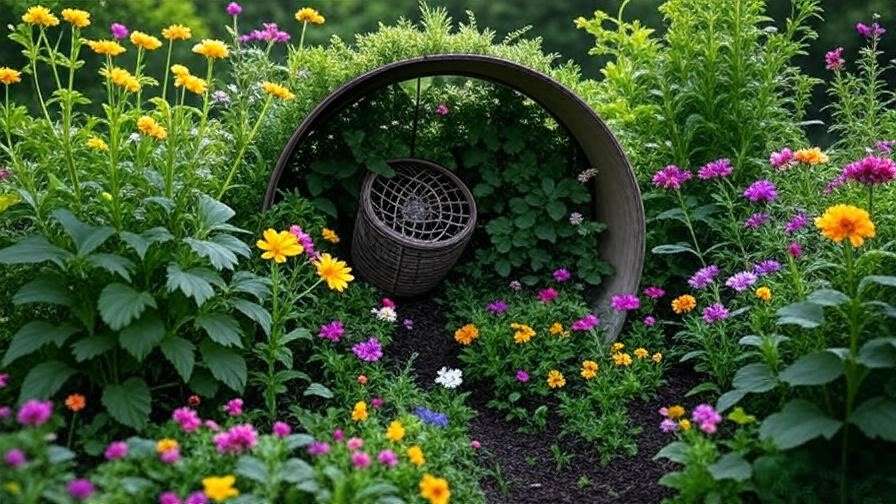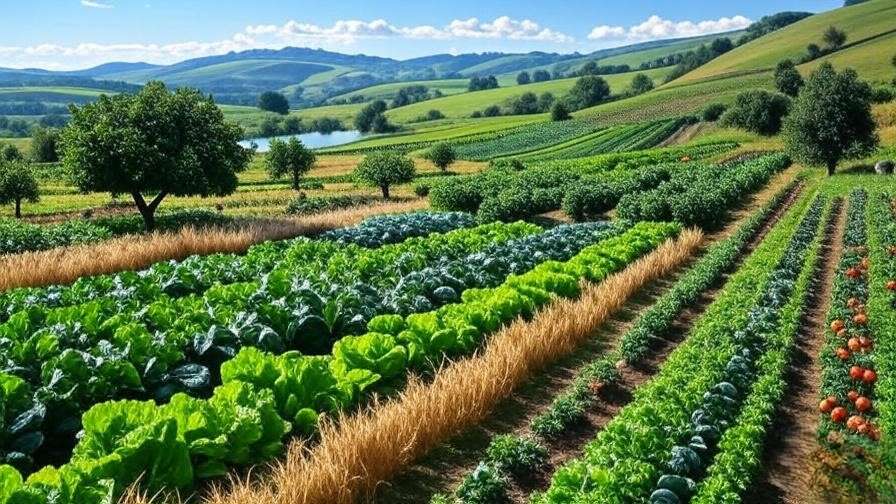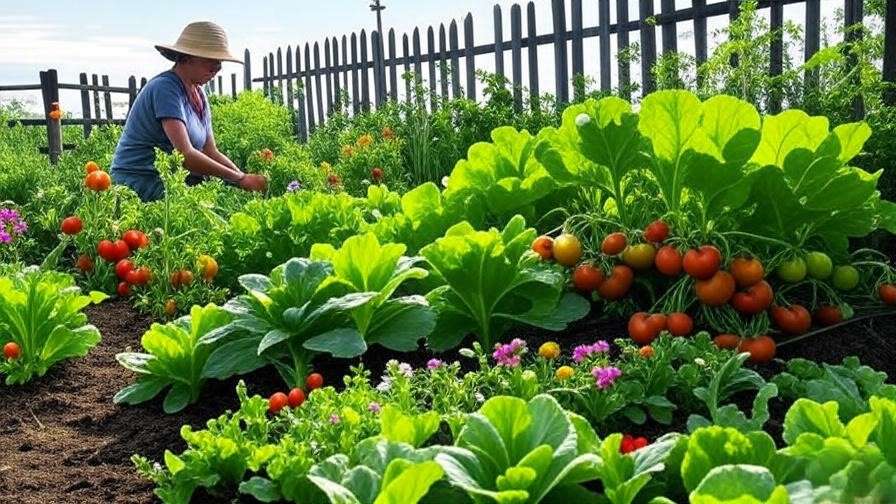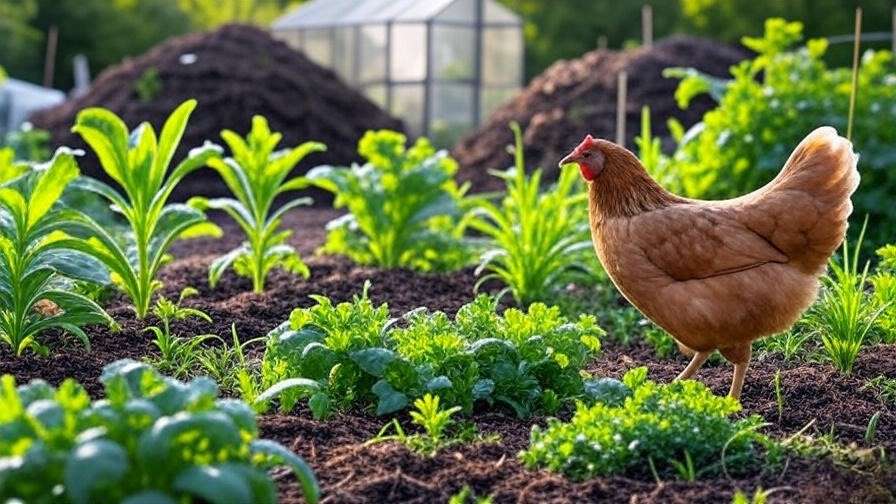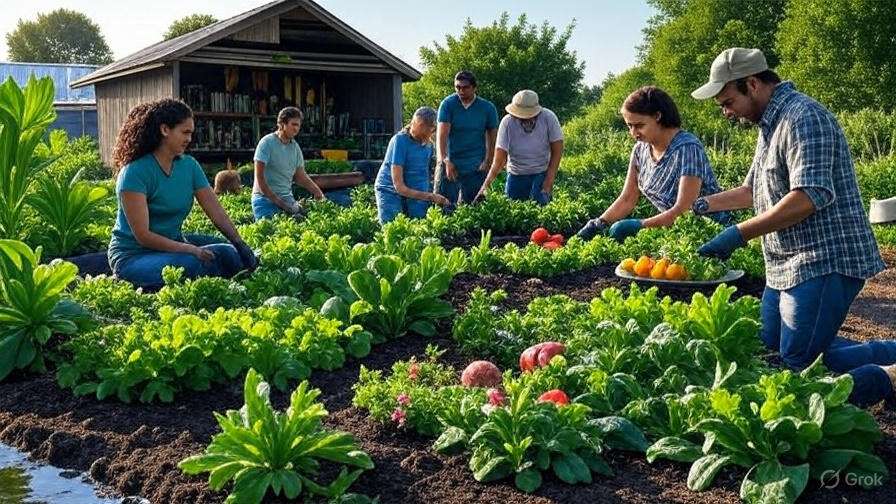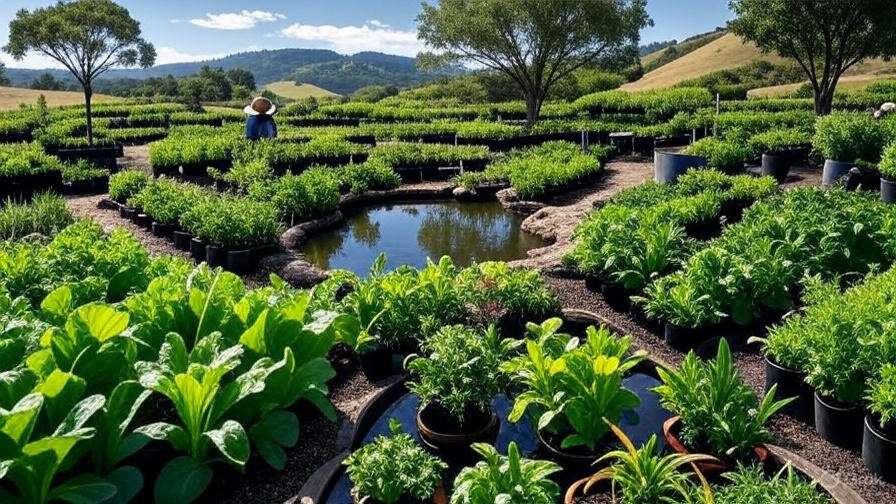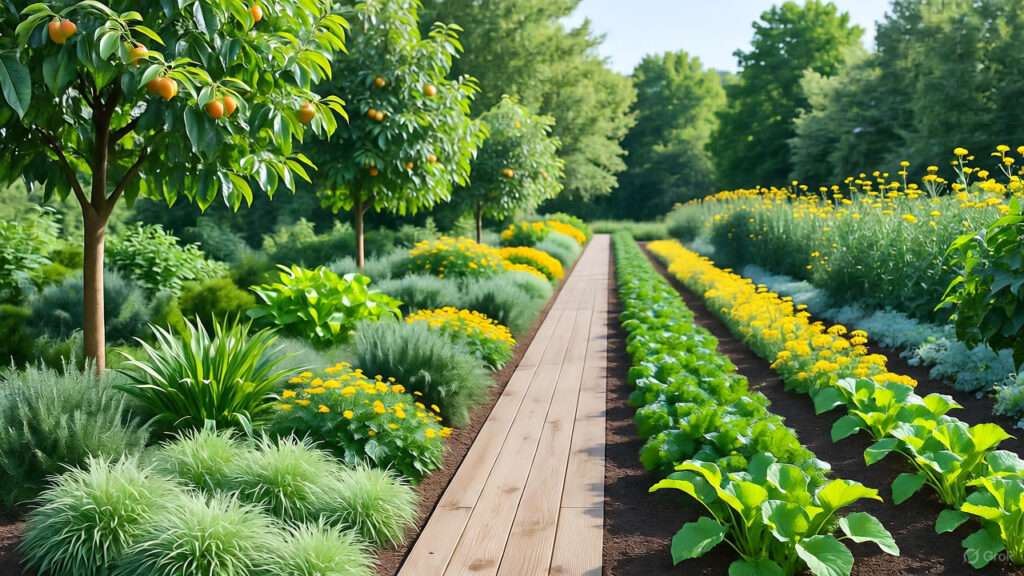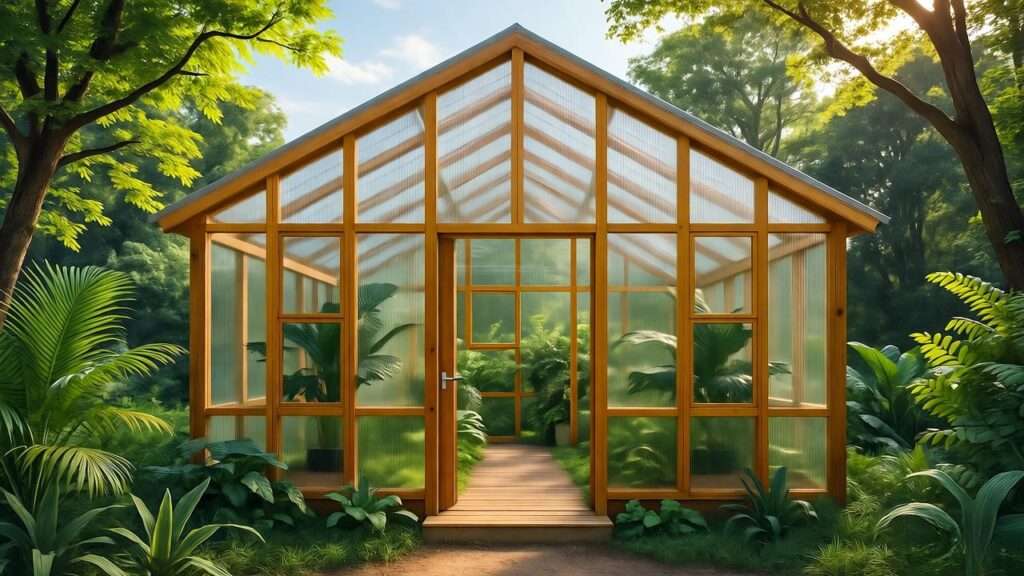Picture this: your backyard transformed into a vibrant, self-sustaining ecosystem, bursting with fresh vegetables, herbs, and flowers, all while nurturing the soil and conserving water. This is the power of permaculture garden beds—a sustainable gardening method that works with nature to produce abundant yields with minimal effort. Whether you’re a seasoned gardener or a beginner, permaculture garden beds offer a practical solution to grow food, enhance biodiversity, and combat environmental challenges like soil degradation and water scarcity. As a certified permaculture designer with over a decade of experience transforming urban and rural spaces, I’ve seen firsthand how these beds can revolutionize gardening. In this comprehensive guide, you’ll learn how to design, build, plant, and maintain permaculture garden beds to achieve maximum yield and sustainability, tailored to your unique space and climate.
What Are Permaculture Garden Beds?
Defining Permaculture Principles
Permaculture, a term coined by Bill Mollison and David Holmgren, blends “permanent” and “agriculture” to describe a system that mimics natural ecosystems. Permaculture garden beds embody principles like observing and interacting with nature, capturing and storing energy, and producing no waste. Unlike traditional gardening, which often relies on chemical fertilizers and monocultures, permaculture beds integrate diverse plants, soil-building techniques, and water-saving strategies to create resilient, self-sustaining systems.
Benefits of Permaculture Garden Beds
Why choose permaculture garden beds? The advantages are compelling:
- Improved Soil Fertility: Layered organic matter and composting techniques enrich soil over time.
- Water Efficiency: Designs like swales and mulching reduce water usage by up to 40%.
- Biodiversity: Polycultures and companion planting attract beneficial insects and deter pests.
- Sustainability: These beds minimize environmental impact and support long-term food security.
For example, a 2023 study by the Permaculture Research Institute showed that a well-designed permaculture bed produced 30% more vegetables than a conventional raised bed over two seasons, with half the water usage.
Planning Your Permaculture Garden Beds
Assessing Your Site
Before building, analyze your site to ensure your permaculture garden beds thrive. Start by observing sunlight patterns, soil type, and water flow. Use tools like a sun path chart to track shade and a soil test kit to determine pH and nutrient levels. Identify microclimates—areas with unique conditions, like a sunny south-facing slope or a shaded corner.
Expert Tip: Create a permaculture zone map, placing frequently visited beds (Zone 1) near your home for easy access, while less-maintained areas (Zone 2-3) can be farther out.
Setting Goals for Your Garden
Define your objectives: Are you aiming for year-round food production, aesthetic appeal, or a habitat for pollinators? Consider your space—urban gardeners might start with a 4×4-foot bed, while rural homesteaders could plan a series of 10×10-foot beds. For instance, a family of four can grow enough vegetables for daily meals in a single 10×10-foot bed with proper planning.
Choosing the Right Bed Type
Permaculture garden beds come in various forms, each suited to different needs:
- Raised Beds: Elevated structures ideal for poor soils or urban spaces.
- Hugelkultur: Mounds built with logs, organic matter, and soil, perfect for water retention.
- Sheet Mulching: No-dig beds layered with cardboard, compost, and mulch for quick setup.
- Keyhole Gardens: Circular beds with a central composting basket, great for small spaces.
| Bed Type | Cost | Effort | Yield Potential |
|---|---|---|---|
| Raised Beds | Moderate | Medium | High |
| Hugelkultur | Low | High | Very High |
| Sheet Mulching | Low | Low | Moderate |
| Keyhole | Low | Medium | High |
Choose based on your climate, budget, and labor availability. For example, hugelkultur excels in dry regions but requires more initial effort.
Building Permaculture Garden Beds
Step-by-Step Construction Guide
Step 1: Mark and Prepare the Site
Clear weeds, rocks, and debris. Ensure proper drainage by avoiding low-lying areas prone to flooding. Use string and stakes to outline your bed’s shape—rectangular for raised beds, mounded for hugelkultur, or circular for keyhole designs.
Step 2: Select Materials
Opt for sustainable materials like reclaimed wood, natural stone, or untreated logs. Avoid chemically treated lumber, which can leach toxins into the soil, conflicting with permaculture’s ethical principles. For no-dig beds, gather cardboard, compost, and mulch from local sources.
Step 3: Build the Bed Structure
- Raised Beds: Construct a frame using wood or stone, typically 12-18 inches high. Fill with a mix of topsoil, compost, and organic matter.
- Hugelkultur: Stack logs or branches at the base, cover with grass clippings, compost, and soil to form a mound. See diagram below for a cross-section:
Layers: Logs, twigs, grass clippings, compost, topsoil, mulch. - Sheet Mulching: Lay cardboard over grass, add 4-6 inches of compost, and top with 2-4 inches of mulch.
- Keyhole Gardens: Build a circular bed (6-8 feet in diameter) with a central composting basket made of wire mesh.
Expert Insight: Permaculture designer Toby Hemenway emphasizes, “Layering organic matter in beds mimics forest floors, creating fertile, self-regenerating soil.”
Step 4: Add Soil and Amendments
Layer compost, aged manure, biochar, and organic mulch to create a nutrient-rich growing medium. Aim for a 2:1:1 ratio of compost, soil, and amendments. Test soil moisture to ensure it’s crumbly, not soggy.
Water Management Strategies
Incorporate water-saving features like swales (shallow trenches to capture runoff), drip irrigation, or ollas (clay pots buried to release water slowly). For example, a permaculture farm in Arizona reduced water usage by 40% by pairing hugelkultur beds with swales, channeling rainwater directly to plant roots.
Planting Your Permaculture Garden Beds
Selecting Plants for Maximum Yield
Choose plants that thrive in your climate and complement each other. Companion planting boosts yields and repels pests—pair tomatoes with marigolds to deter nematodes or grow basil near peppers to enhance flavor. Prioritize polycultures, mixing annuals (e.g., lettuce), perennials (e.g., asparagus), and nitrogen-fixers (e.g., beans).
Top 10 Plants for Permaculture Garden Beds:
- Comfrey (soil enricher)
- Kale (nutrient-dense)
- Beans (nitrogen-fixer)
- Zucchini (high yield)
- Marigolds (pest deterrent)
- Chives (flavor and pest control)
- Strawberries (perennial fruit)
- Spinach (fast-growing)
- Clover (cover crop)
- Tomatoes (versatile crop)
Designing Plant Guilds
A plant guild is a group of species that support each other, like the Native American “Three Sisters” (corn, beans, squash). Corn provides structure, beans fix nitrogen, and squash suppresses weeds. To create a guild:
- Select a central element (e.g., a fruit tree).
- Add nitrogen-fixers (e.g., clover).
- Include pest-repellents (e.g., garlic).
- Incorporate mulch plants (e.g., comfrey).
Case Study: A permaculture gardener in Oregon built an apple tree guild with clover, chives, and yarrow, increasing fruit yield by 25% and reducing pest damage.
Timing and Succession Planting
Plan for year-round production with seasonal crop rotations. In Zone 7, plant cool-season crops (e.g., spinach) in early spring, followed by warm-season crops (e.g., tomatoes) in summer, and cover crops (e.g., clover) in fall. Use a planting calendar to track sowing and harvesting dates for continuous yields.
Maintaining Your Permaculture Garden Beds
Soil Health and Fertility
The foundation of a thriving permaculture garden bed is healthy soil teeming with microbial life. Regularly add organic matter through composting, vermiculture, or cover cropping to maintain fertility. Compost kitchen scraps and yard waste to create a nutrient-rich amendment, applying 1-2 inches annually. Vermiculture—using worms to break down organic matter—produces high-quality castings that boost soil structure. Cover crops like clover or vetch fix nitrogen and prevent erosion during off-seasons.
Expert Tip: Test soil health every 6 months using a simple pH kit or a jar test to check soil texture. Aim for a pH of 6.0-7.0 for most vegetables. Adding worm castings annually can increase microbial activity by up to 50%, according to a 2024 study by the Rodale Institute.
Pest and Weed Management
Permaculture garden beds rely on natural methods to manage pests and weeds, avoiding synthetic chemicals. Attract beneficial insects like ladybugs and lacewings by planting nectar-rich flowers (e.g., yarrow, dill). Use trap crops, such as nasturtiums, to lure pests away from main crops. Physical barriers like row covers protect against insects without disrupting ecosystems.
For weeds, apply a thick layer of organic mulch (e.g., straw, wood chips) to suppress growth and retain moisture. Dense planting also crowds out weeds, creating a living mulch.
Real-World Example: A permaculture farm in California reduced pesticide use by 80% by integrating marigolds and beneficial NORMALSIZE
insect habitats, demonstrating the power of integrated pest management in permaculture systems.
Long-Term Care and Adaptation
Permaculture garden beds evolve over time, requiring observation and adaptation. Keep a garden journal to track plant performance, soil changes, and weather patterns. Adjust bed designs based on seasonal observations—add more mulch in dry summers or expand drainage systems in wet winters. Regularly rotate crops to prevent nutrient depletion and disrupt pest cycles.
For example, if you notice declining yields in a raised bed, test the soil and add targeted amendments like bone meal for phosphorus or greensand for potassium. Long-term success hinges on treating your garden as a living system, responsive to its environment.
Common Mistakes to Avoid
Even experienced gardeners can stumble when starting with permaculture garden beds. Here are five common pitfalls and how to avoid them:
- Overcomplicating the Design: Start with a single, simple bed (e.g., a 4×4-foot raised bed) before scaling up to complex systems like hugelkultur.
- Ignoring Local Conditions: Failing to assess soil type or climate can lead to poor yields. Always conduct a site analysis first.
- Neglecting Maintenance: Permaculture beds require regular care, like mulching and composting, to stay productive.
- Planting Monocultures: Avoid single-crop beds, which are prone to pests and soil depletion. Embrace polycultures for resilience.
- Underestimating Water Needs: Even water-efficient designs need consistent moisture in the first year. Install drip irrigation or ollas early.
By sidestepping these mistakes, you’ll set your permaculture garden beds up for long-term success.
Scaling Up: Expanding Your Permaculture System
Integrating Beds into a Larger Permaculture Design
Once your permaculture garden beds are established, integrate them into a broader permaculture system. Connect beds with pathways made of natural materials like gravel or wood chips for easy access. Incorporate animals, such as chickens, to fertilize beds and control pests naturally. For example, a small flock of chickens can provide manure for compost while eating slugs and insects, creating a closed-loop system.
Add complementary elements like fruit trees, rainwater harvesting systems, or bee hives to enhance productivity. A well-integrated design might feature a keyhole bed near a pond, where aquatic plants filter water and provide mulch, boosting the garden’s self-sufficiency.
Community and Urban Permaculture
Permaculture garden beds aren’t just for rural homesteads—they thrive in urban settings too. In small spaces, use vertical gardening or container beds to maximize yield. Community gardens can adopt permaculture principles by sharing resources like compost bins or water systems.
Success Story: In 2024, a rooftop permaculture garden in Chicago, built with raised beds and keyhole designs, produced enough vegetables to feed 20 families year-round, proving the scalability of permaculture in urban environments.
FAQs About Permaculture Garden Beds
What is the best size for a permaculture garden bed?
A 4×8-foot raised bed is ideal for beginners, providing ample space for polycultures while remaining manageable. Larger beds (e.g., 10×10 feet) suit families or community gardens.
How much time does it take to maintain a permaculture garden bed?
Initial setup takes 1-2 days, but maintenance requires just 1-2 hours weekly for weeding, mulching, and harvesting, thanks to permaculture’s low-maintenance design.
Can permaculture garden beds work in all climates?
Yes, with adaptations. In arid climates, use hugelkultur for water retention; in wet climates, ensure proper drainage with raised beds or swales.
What are the startup costs for building a permaculture garden bed?
Costs range from $50-$200, depending on materials. Sheet mulching is cheapest, using free cardboard and compost, while raised beds may require purchased lumber.
How do permaculture beds differ from raised garden beds?
Permaculture beds emphasize sustainability, polycultures, and natural systems, while traditional raised beds often focus on aesthetics or single crops.
Conclusion
Permaculture garden beds offer a transformative approach to gardening, blending high yields with environmental stewardship. By mimicking natural ecosystems, these beds improve soil health, conserve water, and support biodiversity, making them ideal for both novice and experienced gardeners. Start small—build one bed, experiment with polycultures, and observe how your garden evolves. Share your progress in the comments or on social media to inspire others. As permaculture pioneer Bill Mollison said, “The only limit to the design is the designer’s imagination.” Begin your permaculture journey today and watch your backyard become a thriving, sustainable oasis.

